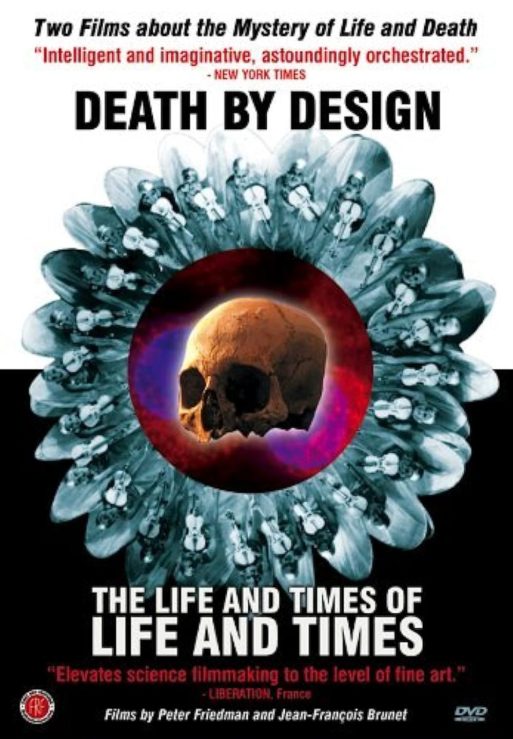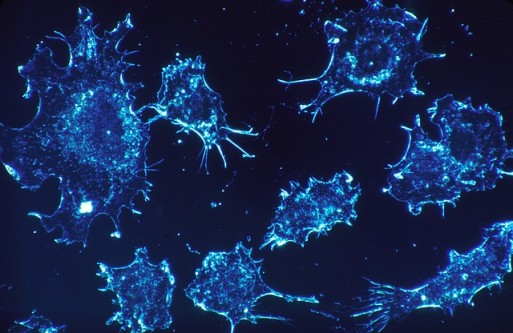 When you imagine cancer cells, you probably don’t picture a group of dancers writhing around on stage. Yet, this is exactly what Peter Friedman and Jean-François Brunet depict in their documentary “Death by Design: Where Parallel Worlds Meet.” This film is purely scientific in some regards, but it also makes the case that the world’s top scientists are in fact artists, relying on intuition and patterns to unlock the mysteries of our bodies.
When you imagine cancer cells, you probably don’t picture a group of dancers writhing around on stage. Yet, this is exactly what Peter Friedman and Jean-François Brunet depict in their documentary “Death by Design: Where Parallel Worlds Meet.” This film is purely scientific in some regards, but it also makes the case that the world’s top scientists are in fact artists, relying on intuition and patterns to unlock the mysteries of our bodies.
Using interviews with some of the top biologists and cell researchers of the decade, this 1997 film explores the complicated world of cells and what it means to be alive. On a basic level, the scientists talk about programmed cell death, featuring footage of real human cells in action. We learn that some cells are essentially designed to commit suicide, like clockwork, and that these death signals come from both genetic and environmental factors. For example, a gene commonly associated with lymphoma actually stops lymphoma cells from killing themselves, which promotes the spread of the cancer. The cells in our bodies are constantly mutating and dying off. Even perfectly healthy cells self-destruct.
One example the documentary uses to illustrate this point is he fact that all of us once had webbed fingers, like a duck’s foot.
One example the documentary uses to illustrate this point is he fact that all of us once had webbed fingers, like a duck’s foot. In the womb, our fingers are interlocked with webbing between each digit, and programmed cell death changes this. Perfectly healthy cells in the webbing suddenly die off all at once, allowing the fingers to separate and the webbing to fuse with the surrounding skin.
However, programmed cell death isn’t always a good thing for living creatures. The same process that literally made us who we are today is the process that will eventually kill us in the end. To illustrate this, the documentary takes a more artistic turn.

Credit: Pixabay CC user skeeze
While the backbone of the film relies purely on science, the filmmakers overlay these facts with beautiful imagery. We see the cell cycle alongside images of muscular dancers gracefully moving along a similar path. We see clips of life at both the macro and micro levels, showing us that, even in our immense diversity, all living things — plants, animals and humans — share the same building blocks of life. We see gorgeous images of life alongside stunning images of cell death, proving that there is beauty to be found in both. These processes are two sides of the same coin; cell death gives us the healthy bodies we have in this moment, and cell death will eventually take our healthy bodies away.
The scientists in the film show their pragmatic sides as well as their philosophical sides, explaining that some of the greatest discoveries in biology are often the direct result of a combination of the two.
This documentary will not be a shocking revelation to anyone familiar with biology or basic cell processes, but it is the perfect introduction for those who know little about the hidden world of cells. The scientists in the film show their pragmatic sides as well as their philosophical sides, explaining that some of the greatest discoveries in biology are often the direct result of a combination of the two. This film steps back from complicated world of research papers, and takes a look at the whole picture, allowing the audience to truly connect with the subject on a deeper level than just scientific facts.
If you remember sitting through high school biology thinking about how useless it was to learn about a cell’s structure, this is the documentary for you. The film not only tells you what you need to know, it makes a great case for why we should all care a little more about the cell life cycle.

 “Death by Design: Where Parallel Worlds Meet” by Jean-François Brunet and Peter Friedman
“Death by Design: Where Parallel Worlds Meet” by Jean-François Brunet and Peter Friedman


 John Mulaney’s “Funeral Planning” on Netflix: No Real Plan
John Mulaney’s “Funeral Planning” on Netflix: No Real Plan

 Composting Bodies Is Now Legal in a Dozen States
Composting Bodies Is Now Legal in a Dozen States














